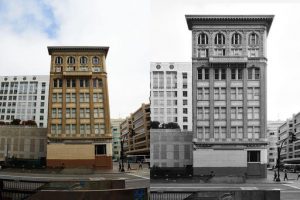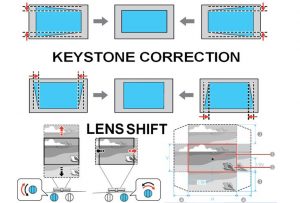What are keystone corrections and lens shift?
Keystone Effect
Most projectors will have at least vertical, if not horizontal, keystone correction; some even offer lens shift. Of course, we are all familiar with the trapezoidal “keystone effect”—the image appears wider at the top when the projector is too low, or wider on one side when the projector is horizontally off center. Keystone correction remedies this, up to a certain specified percentage.

Keystone Correction
The limitation of keystone correction is that it is achieved digitally, like digital zoom on a camcorder. The more you apply, the more the image will be degraded. If you mount or place the projector so that the lens is not below the bottom of the screen or above the top of the screen (assuming a right angle relative to the screen) you should be okay.

Reposition
If you start getting outside of a normal mounting situation (or are stacking or edge blending) you will seriously want to consider picking a projector with lens shift. Lens shift serves the same purpose and then some, letting you “reposition” the image optically with no loss in image quality. To get lens shift, you are probably looking at a high-end home theater or fixed installation projector.


